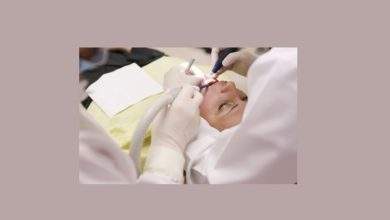
There’s hope. You may have binocular vision dysfunction (or BVD) – where your eyes don’t work well together. Prism glasses may be the answer.
But if you’re like most people…
You want quick results. No fuss. You don’t want to keep wearing those darn prism glasses if they give you a headache!
You jump right in. Hours of daily wear. Long periods behind the computer. Driving. Running errands. It’s tiring just thinking about it.
You feel cheated. Tired. Disillusioned. Don’t want to bother any longer. Life is too short for those dang prism glasses!
The thing is… that experience is common. People expect immediate results. When they don’t happen, they just quit. They give up on prism glasses before giving their brains time to adjust.
In this post, I’ll help you avoid that mistake.
Here’s how to transition to your new prism glasses with minimal discomfort. I’ll show you the strategies that have helped thousands of patients successfully adapt.
Let’s start.
What You’ll Learn
- How prism glasses work
- Symptoms of adjustment
- Tips to speed up adjustment
- Timeline for when to expect results
- Symptoms that require medical attention
But First… What Are Prism Glasses?
BVD prism glasses are special lenses that bend light before it reaches your eyes. That means…
Your eyes see the same image from the left and right eye. They no longer have to strain to merge misaligned images.
When you have binocular vision dysfunction, the images each of your eyes see are off from each other. Your eye muscles must work extra hard to make up for this misalignment. This causes symptoms like:
- Headaches and migraines
- Visual blurring
- Neck, back, and shoulder pain
- Eye strain and fatigue
- Dizziness and balance issues
The prisms in your glasses redirect the light so that your eyes focus on the same point. As a result, your eyes can relax. Your eye muscles no longer need to overexert. This reduces your BVD symptoms and discomfort.
Over half of my patients report symptom relief the first visit with prism glasses.
Pretty cool, huh?
Why Is Adjustment Period Important?
Did you know…
Your brain has been adjusting for your misaligned vision for months or even years. It developed “shortcuts” to compensate.
Prism glasses help realign the images your eyes see. But it means your brain must “unlearn” what it’s been doing.
Think of it like learning to drive a new car. You need to unlearn your muscle memory from the old one. It takes time.
Your visual system will recalibrate when you first start wearing prism glasses. Your brain will learn to process the newly aligned images. Your eye muscles will relax. This is a good sign the prism glasses are working.
What Symptoms Are Common During Adjustment?
During the first few days or weeks after getting prism glasses, you might notice:
- Mild dizziness or disorientation when turning your head
- Slight changes in depth perception
- Temporary increase in visual awareness
- Unusual spatial perception
- Brief visual confusion
These symptoms should go away in a few days to two weeks. Don’t panic! It means your brain is adjusting to the corrected visual information.
The time frame varies based on how long you’ve had misalignment and how severe it is.
Tips for Easier Transition to Prism Glasses
Want an easier transition to your new prism glasses? Here’s some advice:
Start Slow: Most people make the mistake of wearing their new prism glasses full time from day one. Don’t do it. You will overload your visual system. Instead, start by wearing your prism glasses for 2-3 hours per day. Add a few hours daily over the first week until you get to full-time wear. You can increase the pace if it’s going well. But you need to give your brain time to adjust.
Be Deliberate with Head Movements: When first wearing your prism glasses, be deliberate and slightly slower with head movements. Rapid head movements can jar your spatial perception while your brain is still adjusting. This is especially true when going up or down stairs. You will naturally find your pace as you become fully adapted. Within a week, your brain won’t even notice.
Consistency Is Key: As soon as you’re wearing prism glasses all the time, try to be consistent. Wear them sporadically, and you’ll confuse your brain and slow down adaptation. Your visual system needs consistent input from your prism glasses to fully recalibrate. It’s just like learning any new skill.
Don’t Keep Switching Glasses: If you have old glasses, avoid constantly switching back and forth from your old glasses to your new prism glasses. This will prevent your brain from fully adapting to the prism correction. Commit to your prism glasses during the adjustment period.
Be Active, But Cautious: Just because you’re wearing prism glasses doesn’t mean you can’t be active. You can do most things you would do otherwise – drive, work on a computer, read, exercise. But be more aware of your movements during the first week. Give yourself more time and conscious awareness. You can speed up later in your adjustment as you get used to them.
Optimize Your Environment: Make the adjustment process easier by controlling your environment. Make sure your home and office have good lighting. Avoid visually complex environments during the first few days of wearing prism glasses. These steps make it easier on your visual system as it recalibrates.
Timeline for Expecting Results
Most people have a general timeline of:
Days 1-3: Initial Awareness. You will feel generally more aware the first day or two. Mild dizziness, disorientation, or changes in spatial perception are common. Symptoms should improve by day 2 or 3.
Week 1: Noticeable Improvement. You will feel your symptoms noticeably reduced by the end of week one. Your brain is relearning how to process aligned images. By week 1, many people report feeling “almost normal”.
Weeks 2-3: Full Adaptation. By 2-3 weeks, most people are fully adapted to prism glasses. They feel natural, and you forget they’re even there. Most of the annoying BVD symptoms should be reduced or gone by then.
Research indicates most people fully adapt within days to a few weeks. Some patients adjust within hours or days. Others can take up to 2 weeks to fully adapt.
Every patient is different.
When to Call Your Eye Doctor
Symptoms are expected during the adjustment period. But certain red flags may indicate the need for medical attention. It could mean your prescription requires adjustment:
- Worsening or no improvement after week 1
- Severe dizziness interfering with activities
- Double vision while wearing your glasses
- Headaches worse than before
- No improvement after 3 weeks
These issues are not common, but don’t suffer in silence. Contact your eye doctor. They can help fine-tune your prescription for full comfort.
Conclusion
It’s not difficult to adapt to prism glasses.
Most patients adapt comfortably in a few days to two weeks. The key is slow and steady. Ease into wearing time, keep consistent, and give your brain time to reset.
Your brain has had to work hard to compensate for misaligned vision for a long time. It will take it a few days to a week to stop doing this and accept the new properly aligned input. This is normal and a sign the glasses are working.
You can start by wearing your prism glasses for 2-3 hours per day. Increase the time slowly over the first week until you are wearing them all the time. Keep movements a bit more deliberate and slower in the first few days to a week.
Once you are wearing your prism glasses all the time, be consistent and try not to switch back and forth to your old glasses. Don’t let your environment beat you. Get good lighting at home and work. Avoid busy visually complex areas until your first week is over.
Prism glasses can help relieve your constant headaches, dizziness, and eye strain. So many people have successfully made this transition and will have you will too.




